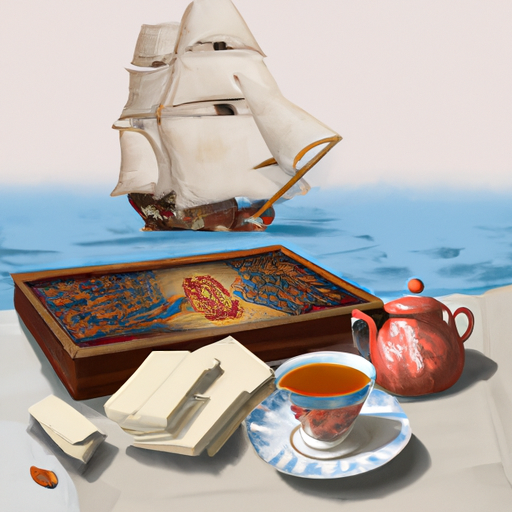Tea's Journey on the High Seas: A Voyage through Maritime Trading History
Ahoy, tea lovers! Prepare to anchor yourselves in a sea of information as we steer this vessel through the uncharted waters of maritime trade's impact on tea. And what better way to celebrate International Tea Day than to dive deep into the role of the oceans in shaping the rich history and culture surrounding our beloved brew?
Anchoring a Global Desire for Tea
The first steep, or should we say step, in understanding the journey tea took through the high seas involves examining the source – the tea plant. Native to China, the Camellia sinensis plant gradually spread beyond its borders through land routes such as the renowned Silk Road and later set sail in pursuit of greater reach.
However, it was maritime trade that primarily facilitated tea's voyage into homes and hearts across the globe. European nations, particularly the British, Portuguese, and Dutch, were the frontrunners in securing the course for tea's future global dominance.
Charting the Course: Notable Maritime Powers in Tea Trade
The maritime powers that charted the course for tea trade shaped the very essence of how we perceive and imbibe tea today. Let's voyage through their contributions and their impact on the tea trade landscape:
-
Portuguese: The Portuguese were the first Europeans to arrive in the East and establish trade relations with China in the early 16th century. Though they were initially more focused on the spice trade, their fascination with tea did not wane, and they introduced it to Europe.
-
Dutch: Tea trading in the Netherlands grew rapidly in the 17th century, becoming the central tea trading hub for all of Europe. It was through the Dutch East India Company that this nation played a significant role in importing tea to the European continent. First introduced to the Dutch aristocracy, the beverage eventually trickled down to the masses.
-
British: British trade for tea rapidly escalated in the 18th and 19th centuries, and tea became a quintessentially British commodity. British maritime strategies, along with the establishment of their own tea plantations in India, Ceylon (now Sri Lanka), and Africa, immortalized tea as a global beverage. Their maritime prowess allowed the British to seize control over the tea market and, consequently, the global tea economy.
| Maritime Power | First Introduced | Key Trading Company | Global Impact |
|---|---|---|---|
| Portuguese | Early 16th century | Casa da Índia | Introduced tea to Europe |
| Dutch | 17th century | Dutch East India Company | Central European tea trading hub |
| British | 18th & 19th centuries | British East India Company | Dominated global tea economy |
Navigating Tea's Arrival in the Colonies
As European nations colonized various parts of the world throughout the Age of Exploration, tea followed suit. The Dutch, for example, transported tea to their colonies in the Cape of Good Hope and North America, while the British played an instrumental role in introducing tea to their colonies in India, Australia, and North America, as well.
Colonial powers' influence on tea cultivation is substantial, from introducing new tea varieties to establishing tea estates or plantations that, to this day, remain iconic to their regions.
Tea Clippers: The Need for Speed in Tea Transportation
The thirst for tea around the world was so unquenchable that a new breed of fast sailing ships, known as tea clippers, was designed and built in the mid-19th century. These ships were intended to transport tea speedily from China to England to meet the growing demand.
But the competition didn't end there. A hallmark of the era was the Great Tea Race, where the fastest tea clipper received various accolades upon arriving home, spurring the fierce competition among sailing vessels and their captains.
Conclusion: Smooth Sailing into the Future of Tea
Today, we sip on a wide array of teas from around the world without much thought of how they reached our teacups. Still, it's essential to recognize the extraordinary maritime journey of this beloved beverage and how international trade on the high seas provided the anchor for the global tea culture we cherish today.
Now, as you lift your cup to your lips, savor not only the flavor but also the rich history that sailed alongside those delicate tea leaves. If you've enjoyed navigating these impressive tea-infused waters and have maritime tea tales to tell, we would love to hear them. Leave your thoughts in the comment section below and let's continue the voyage together!
